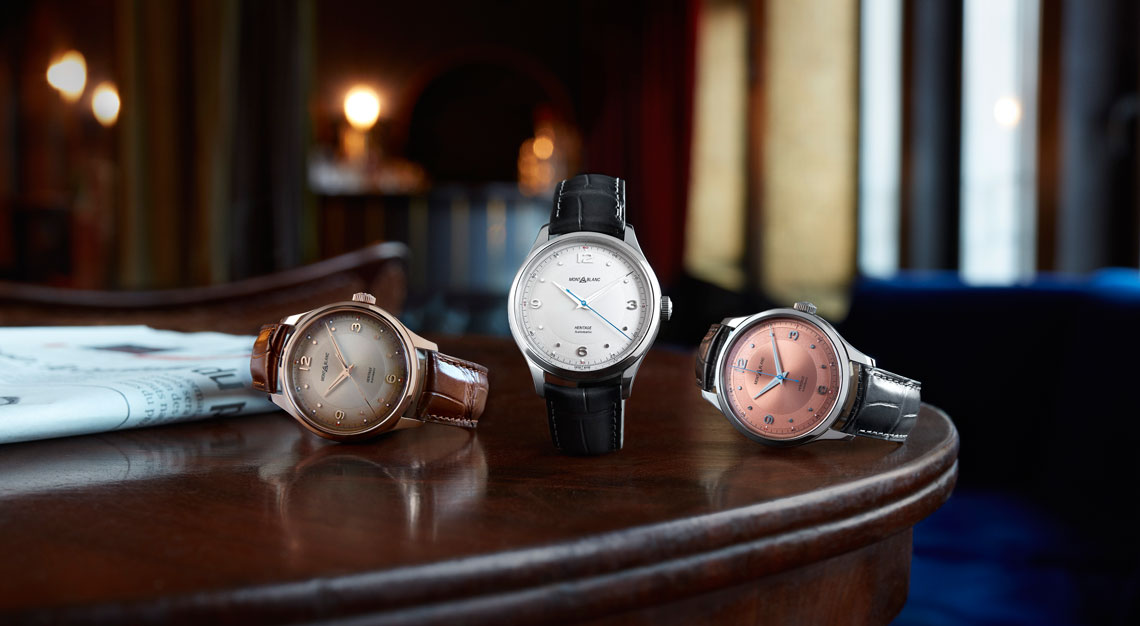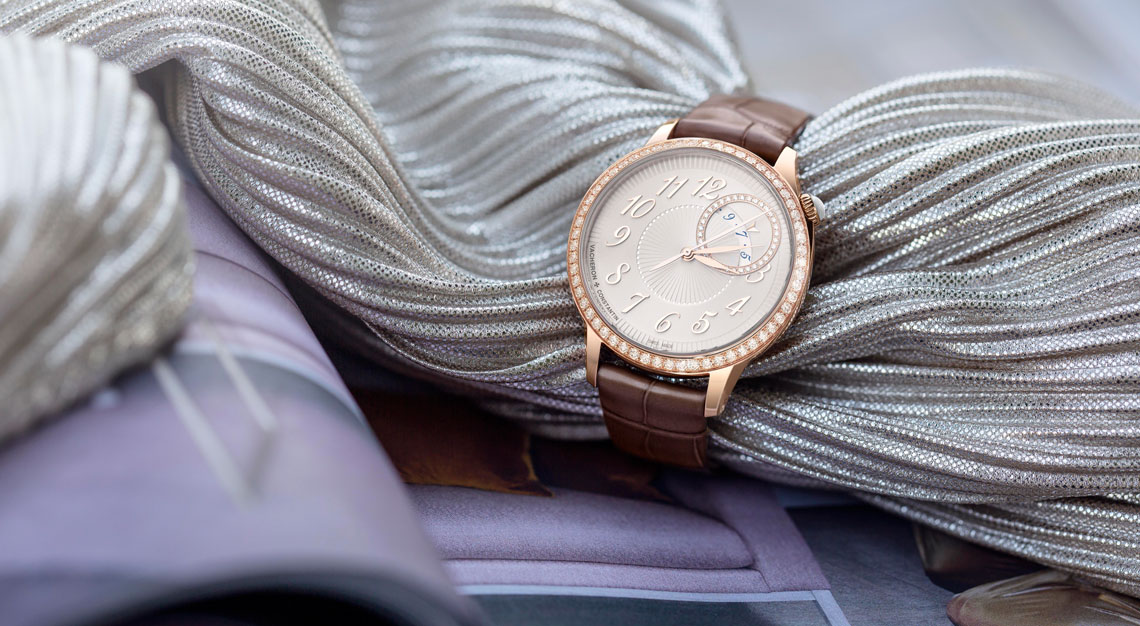Yes, the watches took inspiration from actual historical masterpieces, and no, they will not be for sale at the museum gift shop. Make your way to the nearest Vacheron Constantin boutique for them.
Through its Métiers d’Arts collection, Vacheron Constantin has taken us through some truly incredible artistic experiences. From the culturally rich Chinese zodiac to the most magnificent human endeavours in history, the collection now turns towards some of the greatest civilisations known to us. With Métiers d’Art Tribute to Great Civilisations, Vacheron Constantin paid homage to four important eras that shaped the world as we know it today. Created under the auspices of its partnership with the Louvre, this collection honoured four iconic and priceless masterpieces housed within the museum, as well as the traditions and cultural symbols behind each of them.
Each great civilisation is represented by one major artistic work, and this presented numerous challenges for Vacheron Constantin’s creative teams. Not only had the artisans to re-create these incredible antiquities with stunning lifelikeness, they needed to miniaturise them to fit within the confines of a watch dial no more than 40mm in diameter.
Yet for Métiers d’Art Tribute to Great Civilisations, the goal was not just to replicate a Louvre masterpiece in a timepiece, but to honour entire civilisations. So it was a true test of the Vacheron Constantin watchmaking teams’ artistic vision as well. Plus the array of fine art techniques required to bring these timepieces to fruition, everything came together to offer a fascinating watchmaking spectacle like no other.
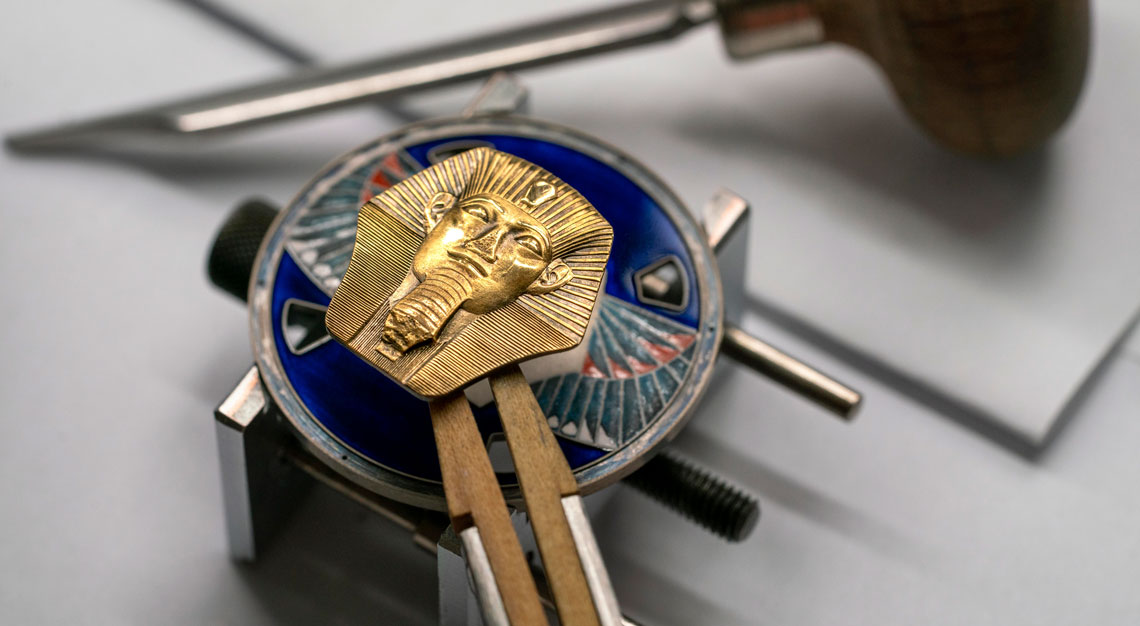
One of the oldest of our great civilisations, the ancient Egyptian Empire certainly provided a beautiful start to the collection. Standing guard in the Louvre’s department of Egyptian Antiquities, the Great Sphinx of Tanis loaned its imposing form to the collection. Its head is carved entirely in gold, and that large false beard typically worn by pharaohs was especially difficult to fit within the limits of the timepiece. The master artisan had to work in relief using the pounced ornament technique, despite the thinness of the plate, before accentuating the depth effect by patinating the material with a blowtorch and then by hand.
The main dial is made of enamel whose deep colour, a mixture of blue and black enamels, is obtained after six firings in the kiln.
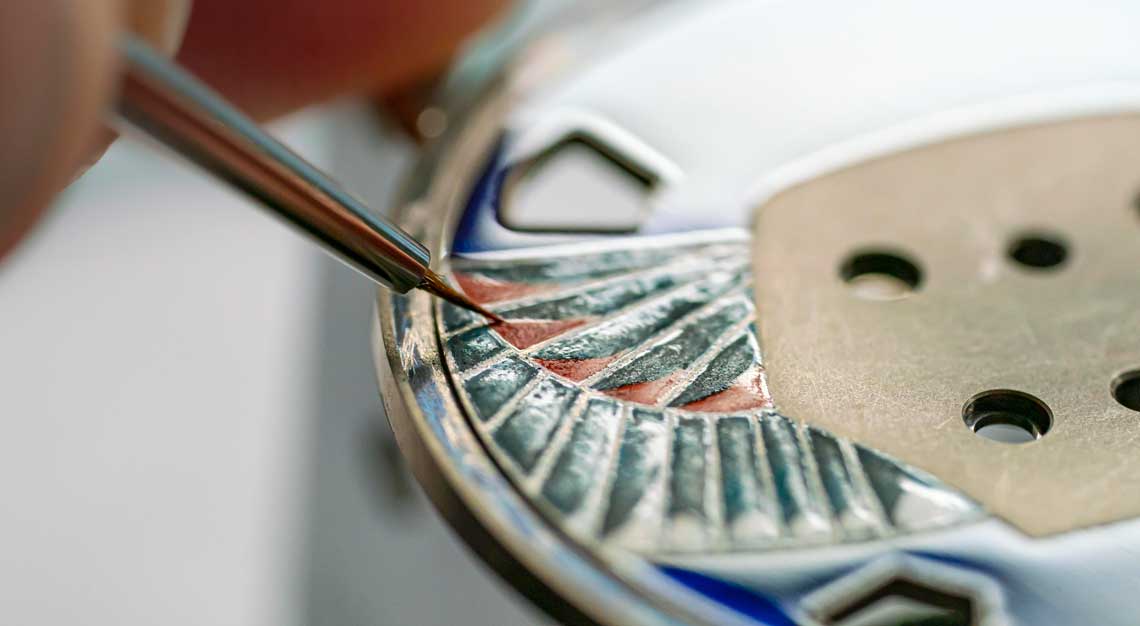
Meanwhile, the decorative dial elements are inspired by the necklace depicted on the cartonnage coffin of Nakht-khonsou-irou. During the 22nd dynasty, the mummy of the deceased was placed in wrappings or a coffin in cartonnage, a material composed of several layers of glued, stuccoed and painted cloth. These wrappings and coffins show the image of the deceased in his shroud adorned with numerous protective, brightly coloured motifs. The chest is always covered by a large necklace composed of geometric and floral motifs. Here, the necklace is trimmed with petals that are reproduced in champlevé enamel sprinkled with inclusions to give the outer frieze an aged appearance.
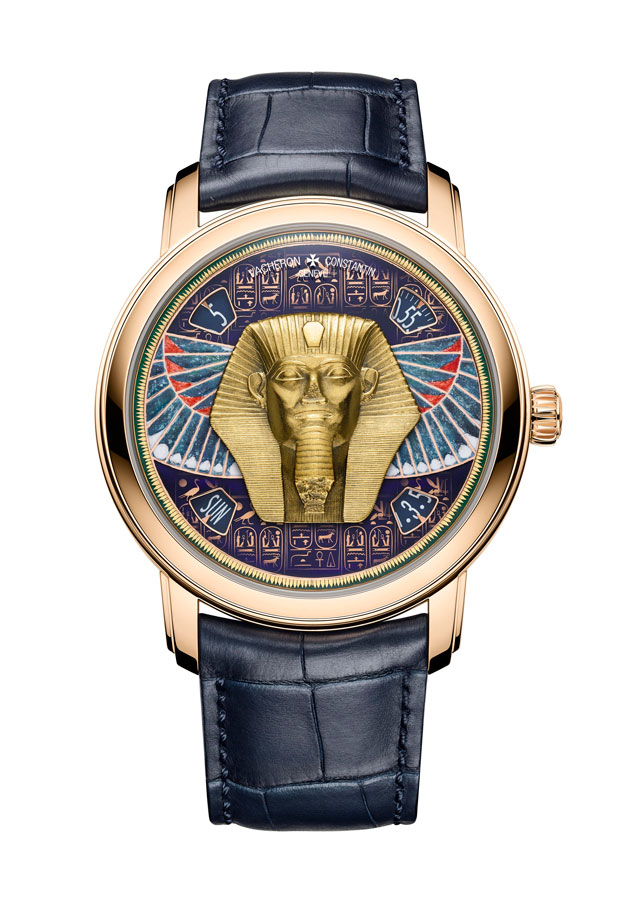
Under this necklace, a winged hawk with a ram’s head appears and the plumage of its wings is picked up on the dial – again in champlevé enamel. The last cultural component is the sapphire crystal bearing the gold applique and engraved by metallisation with hieroglyphic inscriptions from a cartouche of the sphinx of Tanis.
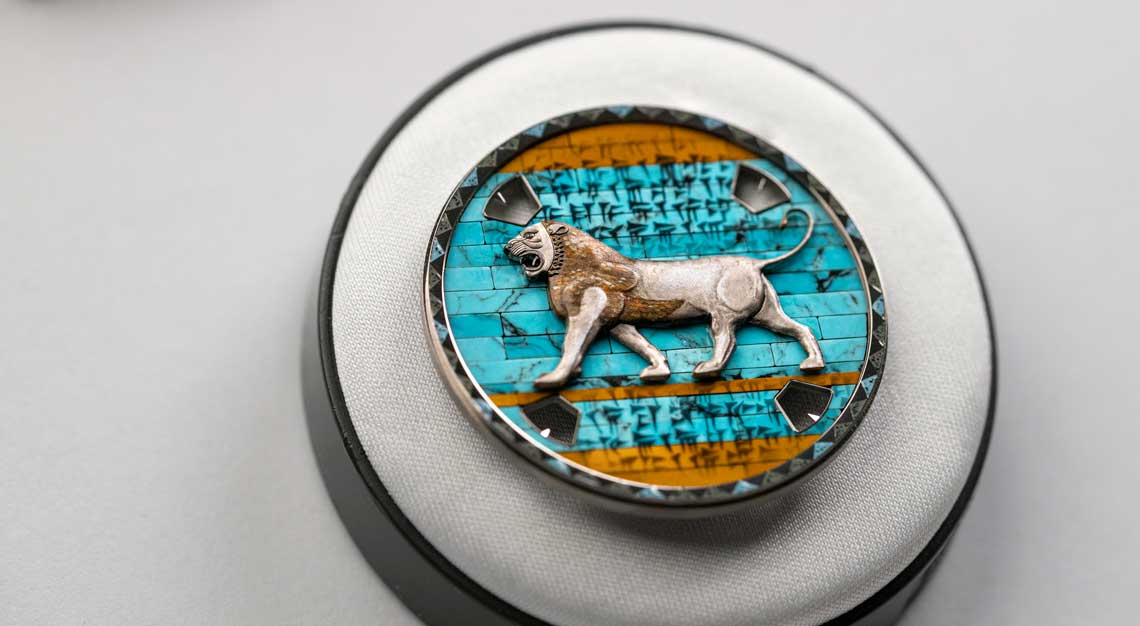
After Egypt, the collection moves into the Persian Empire where King Darius the Great was known as one of the most formidable rulers of the Achaemenid Dynasty. Darius the Great is remembered for his confrontation with the Greek cities who succeeded in stopping his armies on the Plain of Marathon. Located in the courtyard of his palace in Susa, capital at that time in southwestern Iran, was a glazed brick Frieze of Lions. A royal animal and divine attribute, lions symbolised power and reverence.
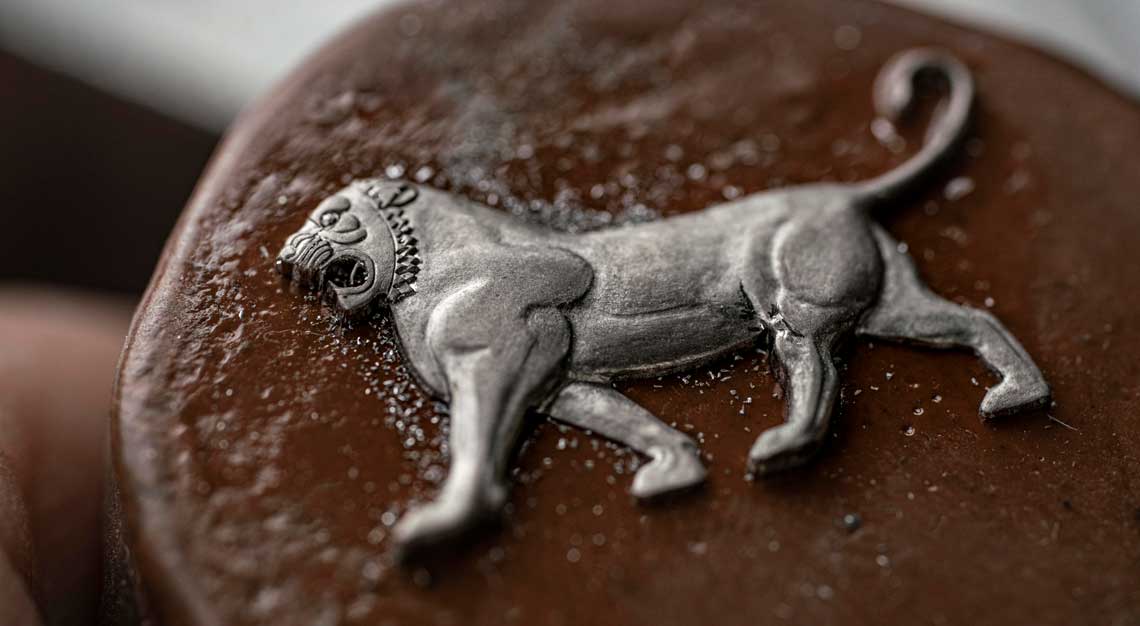
To accurately depict this precious piece of history, the master engraver captured all the details of the original, right down to the advanced stylisation of the muscles and fur of the lion’s mane.
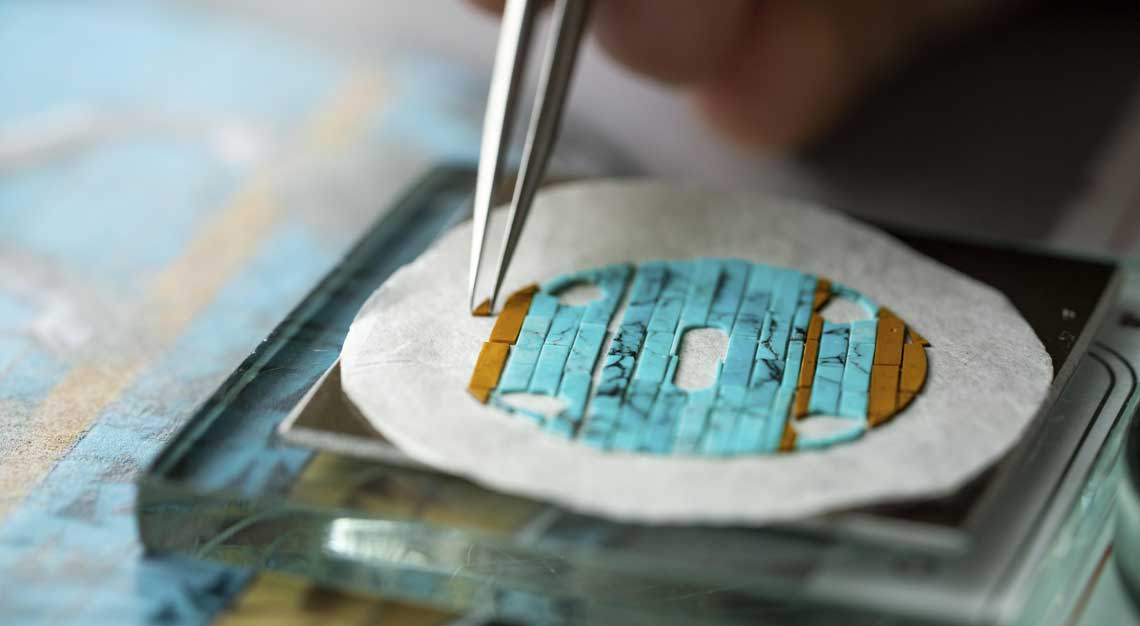
To re-create the presence of glazed bricks affixed to a wall, Vacheron Constantin’s artisans opted for stone marquetry of turquoise and yellow mochaite jasper, using stone fragments veined with natural inclusions for a more realistic outcome. Highly fragile with large amounts of wastage, the artisans succeeded in carving out all 69 components, each different in size and appearance.
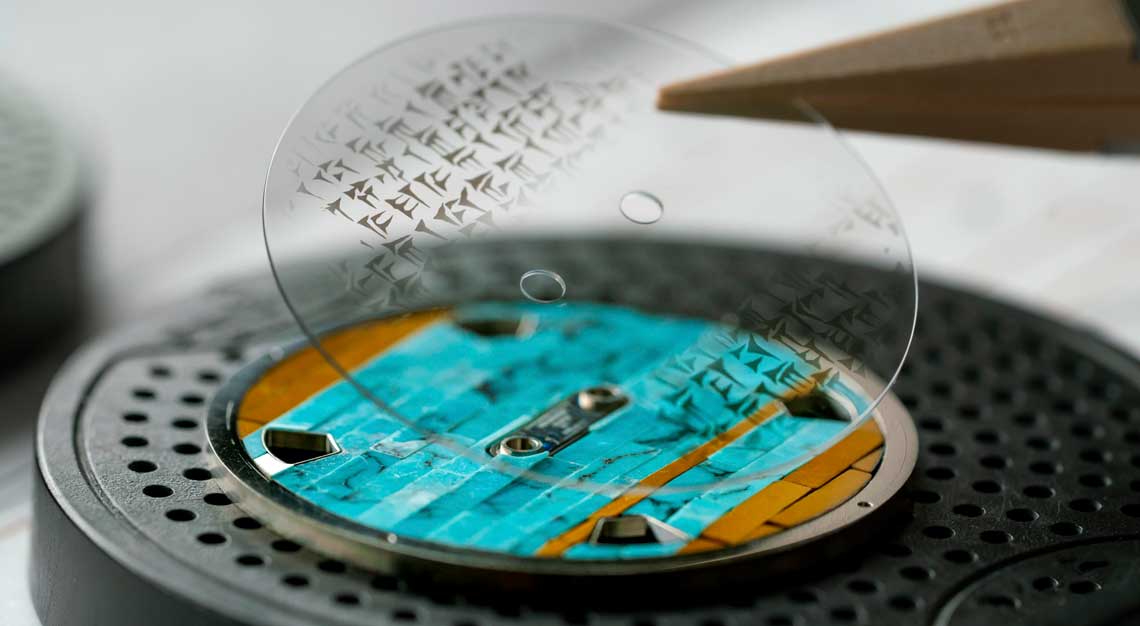
Meanwhile, the frieze surrounding the dial was inspired by the decoration of another well-known work from the Palace of Darius: the Frieze of Archers. This ornamentation, consisting of a juxtaposition of triangles, is made of engraved metal and champlevé enamel with “ageing” inclusions.
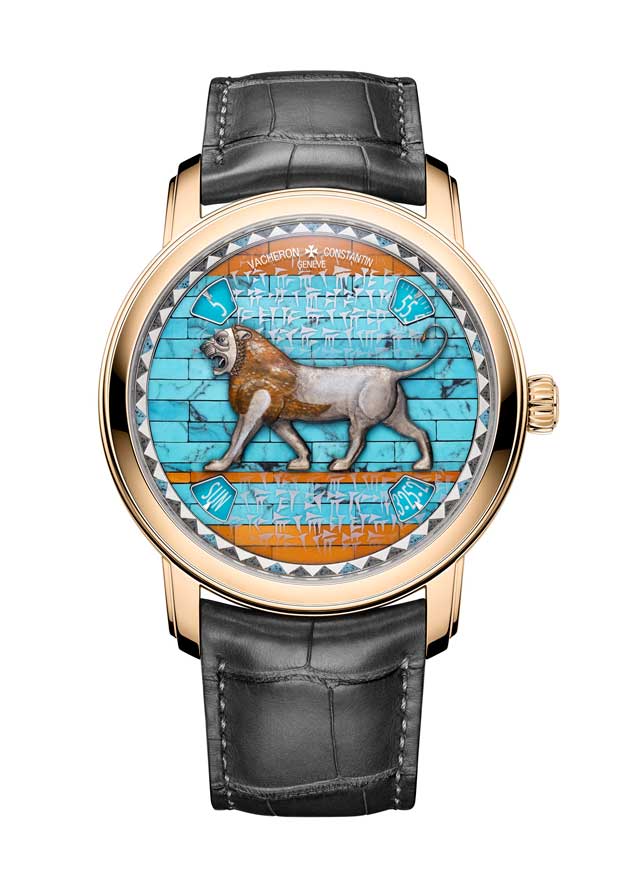
Lastly, the sapphire crystal of this model bears writing elements engraved by metallisation that are taken from a tablet inscribed in Old Persian, which happens to be one of the first texts written by none other than Darius the Great himself as he rose to power.
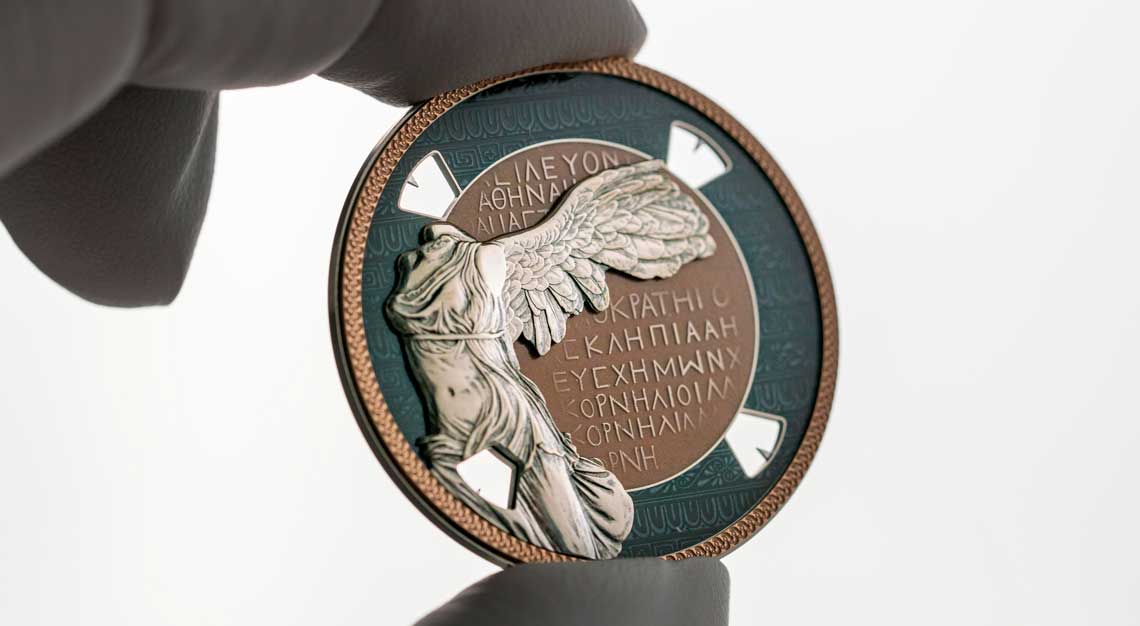
The third timepiece brings us to Hellenistic Greece and of all the masterpieces from this era currently at the Louvre, none are more iconic and breath-taking than the Winged Victory of Samothrace. Carved in white Parian marble and ingeniously constructed, it illustrates a movement of sculptures typical of the second century BC. The drapery of the statue, ruffled by the wind with a large flow of fabric falling in deep folds between the legs, represented a major difficulty for the engraver in charge of reproducing all its subtleties.
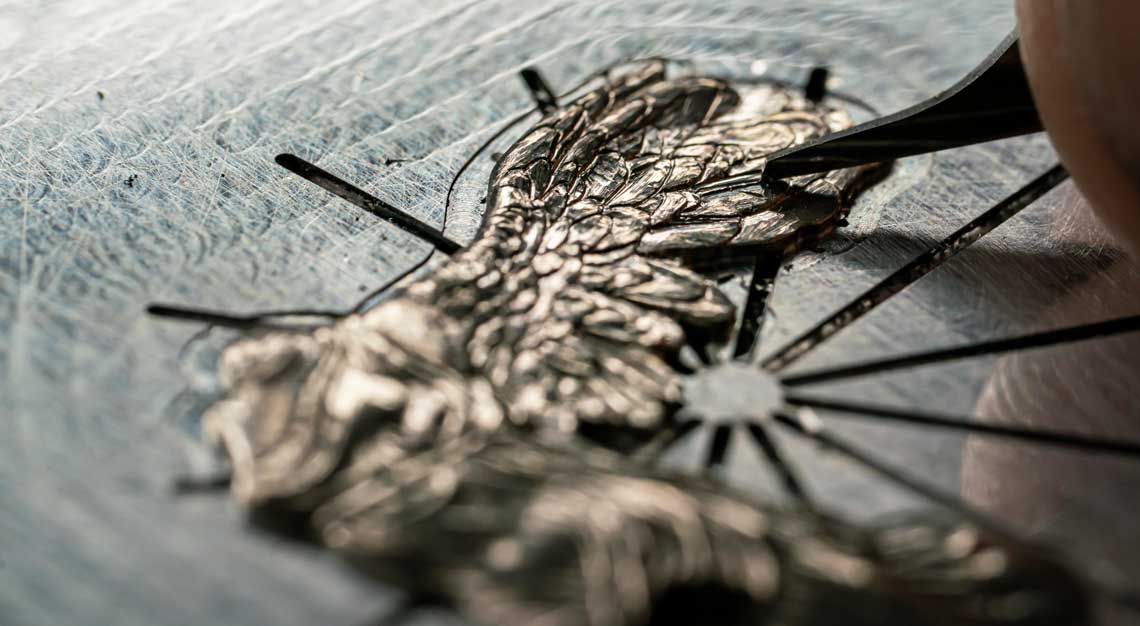
In addition, the goddess’ body is set against a backdrop painted in brown enamel. Note that of all the colours, brown is a colour that’s very difficult to achieve, and required a mixture of rare enamels that are no longer produced, as well as six firings in the kiln. The periphery features grisaille enamelling depicting the decorative friezes taken from two Greek vases. These ceramic objects bearing red-painted geometrical figures feature various ornaments with foliage or geometric motifs, which are picked up on the dial.
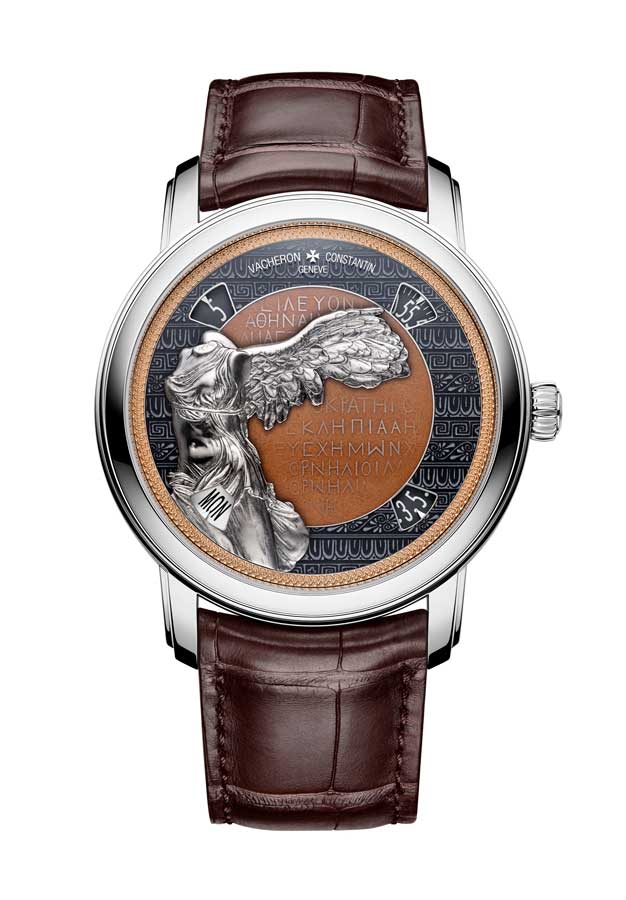
The latter is also surrounded by a gold frieze adorned using the line engraving technique, inspired by that of the Vase of Pergamon, a first century BC masterpiece of marble sculpted in bas-relief. The ancient Greek script engraved by metallisation on the sapphire crystal bearing the applied Victory is taken from a second AD votive stele discovered in Samothrace.
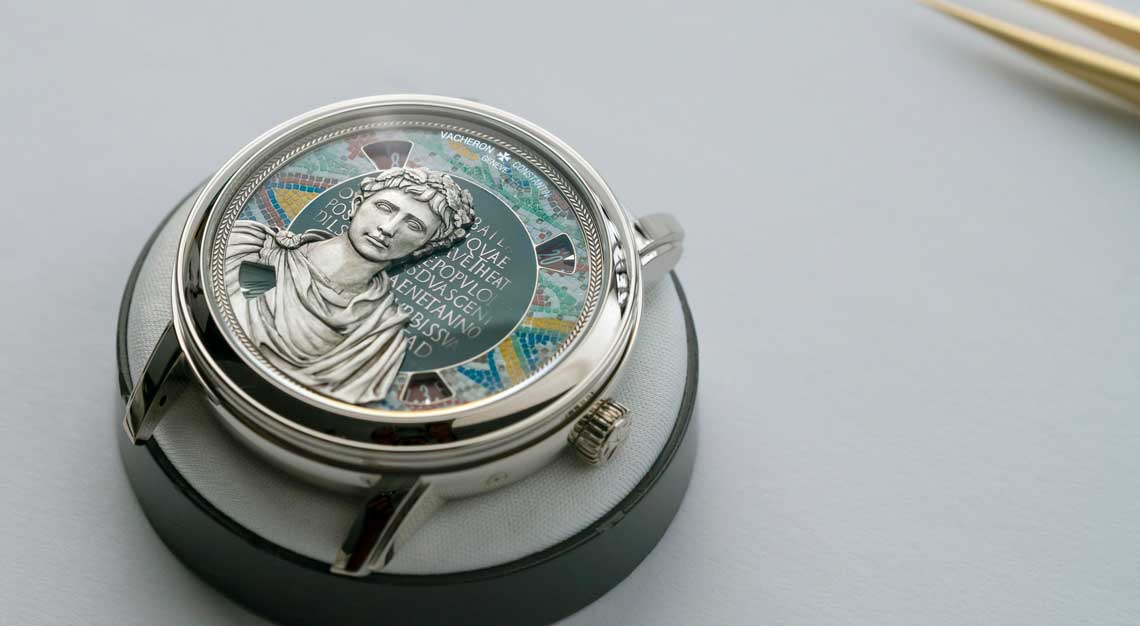
Lastly, the fourth and final model in Vacheron Constantin’s Métiers d’Art Tribute to Great Civilisations collection concludes its journey in the Roman Empire of the Julio-Claudians which lasted between 27 BC and 68 AD. Regarded as one of the greatest leaders in human history, Octavian Augustus was the first Roman emperor and his likeness was immortalised in a marble sculpture housed in the Louvre. Depicted wearing a crown of oak leaves, the Augustus was carved in gold, where the engraver replicated not just his likeness in miniature but also the natural folds of his tunic.
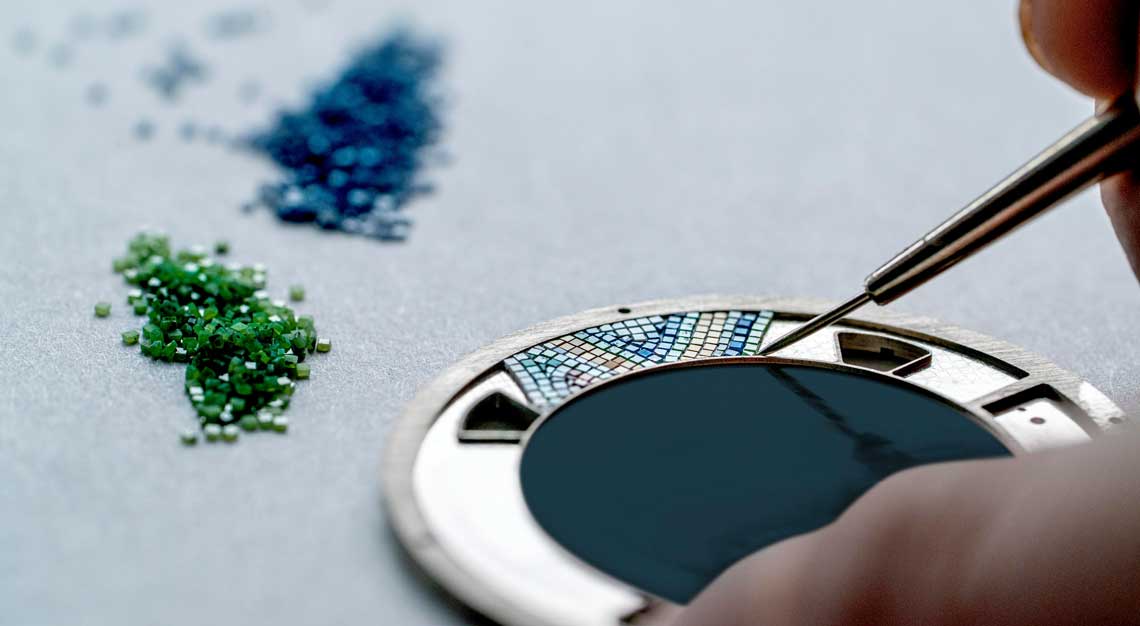
The centre of the dial is enamelled in blue-green, while its periphery is adorned with stone micro-mosaic. This is the famous fourth-century mosaic discovered in Lod, Israel, that served as the inspiration for the ornamentation motifs found on the dial periphery.
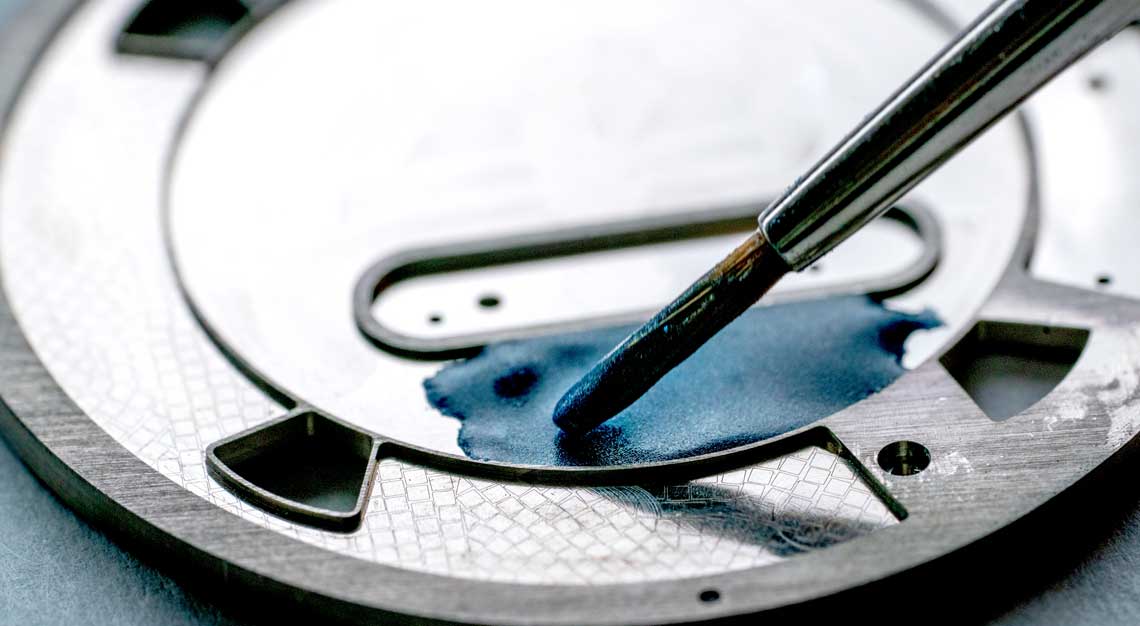
It’s a tricky task as any error in the positioning and gluing of the tiny hard stone fragments would have required re-enamelling the Grand Feu dial used as a base. Meticulous care was required when adjusting the stones so as to follow the contours of the motifs and their colours. No less than seven different types of stones – 660 in all – were used to compose this micro-mosaic: quartzite, cacholong, dumortierite, mochaite, red jasper, grossular, red aventurine.
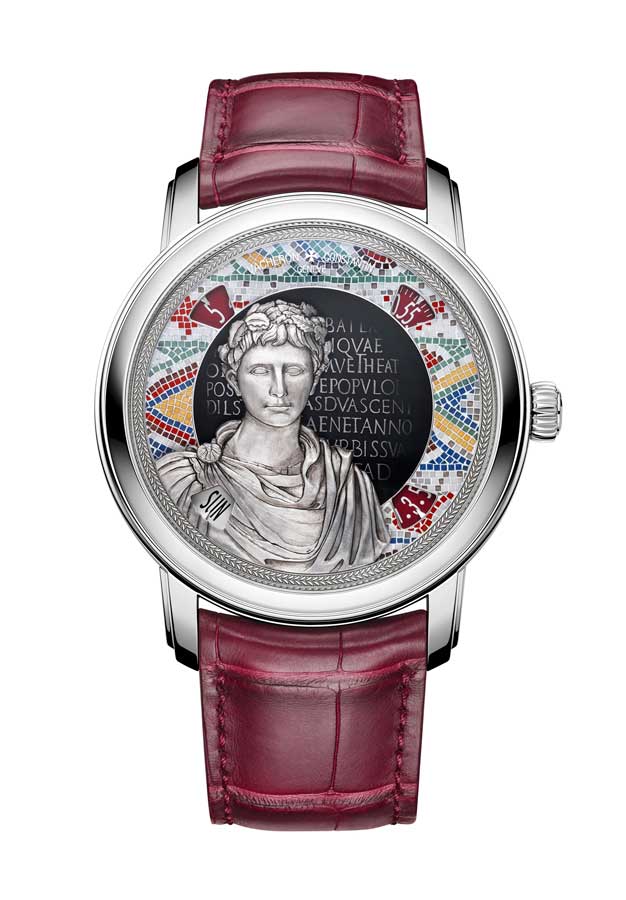
The Latin script engraved on the sapphire crystal are drawn from a dedication addressed to the Genius (divine protector) of the city of Rusicada (Skikda in Algeria). The text commemorates its installation by a local dignitary who opens his invocation with a tribute to the Emperor Augustus.
Each of these four handcrafted timepieces are limited and numbered to five pieces and available exclusively through Vacheron Constantin boutiques.



